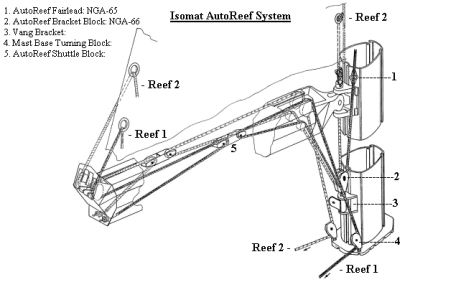B27
Well-Known Member
With a balance block system, the total ,movement of rope through cringles is the same as with 2-line reefing.
With a no-balance block system, the length of rope which moves through the leach cringle also moves through the luff cringle. So typically there is a lot more friction. Even if the cringles are replaced by sheaves, the rope is typically touching the sail and creating friction.
A good balance block system can work well without having heavy sheaves hanging around the sail in light airs.
The devil is in the detail, a lot of single line systems seem to turn into hard work when push comes to shove.
It's more important to make your system work as well as it can, than to pick the 'best' system' and put up with friction.
Personally, I have 2-line reefing, with a 2:1 block in the boom for the first reef leach. I like that because I can get a pretty solid reef in easily and quickly, I don't even need to touch the topping lift. It's easier to lift the boom with the reef line than with the topping lift.
Any system with blocks in the boom is easily ruined by a twist or two though.
Boats vary a lot and we often have to work around what previous owners have passed on to us. Bless 'em!
With a no-balance block system, the length of rope which moves through the leach cringle also moves through the luff cringle. So typically there is a lot more friction. Even if the cringles are replaced by sheaves, the rope is typically touching the sail and creating friction.
A good balance block system can work well without having heavy sheaves hanging around the sail in light airs.
The devil is in the detail, a lot of single line systems seem to turn into hard work when push comes to shove.
It's more important to make your system work as well as it can, than to pick the 'best' system' and put up with friction.
Personally, I have 2-line reefing, with a 2:1 block in the boom for the first reef leach. I like that because I can get a pretty solid reef in easily and quickly, I don't even need to touch the topping lift. It's easier to lift the boom with the reef line than with the topping lift.
Any system with blocks in the boom is easily ruined by a twist or two though.
Boats vary a lot and we often have to work around what previous owners have passed on to us. Bless 'em!

